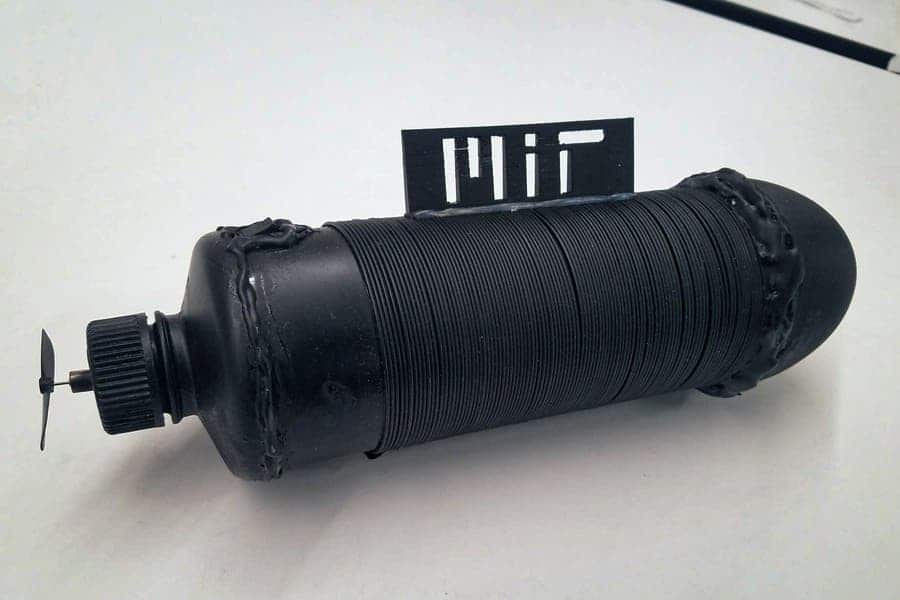Imagine a ball of yarn that could power flexible electronic devices woven into your T-shirt. That’s exactly what engineers at MIT have done, creating a rechargeable lithium-ion battery in the form of very long fiber. According to the authors of the new study, the fiber might even be used to 3D print batteries in any shape.

The proof of concept is 140 meters long, making it the longest flexible fiber battery thus far. This length is arbitrary though and the researchers claim the battery fiber could still provide power at much longer lengths. “We could definitely do a kilometer-scale length,” Tural Khudiyev, formerly an MIT postdoc and now an assistant professor at the National University of Singapore, said in a statement.
This is not the first time scientists have made batteries in the form of fiber. However, all previous attempts placed the lithium and other key materials outside the fiber, whereas the new system embeds the battery inside the fiber. This protective outside coating is critical for functioning flexible power supplies, providing both stability and waterproofing.
The manufacturing involves using novel battery gels along with a standard fiber-drawing system. All the components of the battery are placed in a large cylinder that is slowly heated just below its melting point. The material is then drawn through a narrow opening, causing pressure that compresses the cylinder to a fraction of its original diameter, while maintaining the original arrangement of the parts. The thickness of the fiber device is only a few hundred microns, much thinner than any previous attempts at a fiber battery.
MIT engineers were inspired to undertake this challenge during their research on wearable electronics. They previously made fibers that embedded LEDs, photosensors, communication systems like WiFi, and other digital systems. These components were flexible enough to be worn by users and washable. However, they all relied on an external power source, which made the wearable products impractical. It was time to turn the battery into a fiber too.
“When we embed the active materials inside the fiber, that means sensitive battery components already have a good sealing,” Khudiyev says, “and all the active materials are very well-integrated, so they don’t change their position during the drawing process.”

To demonstrate the functionality of this proof of concept, the researchers used the fiber battery to power a “Li-Fi” communications system, the kind that uses pulses of light to transmit data rather than radio waves. The Li-Fi includes a microphone, pre-amp, transistor, and diodes. They also demonstrated the integration of LED and Li-ion batteries inside a single fiber, but more than three or four devices could be combined in the same compact space in the future.
“The beauty of our approach is that we can embed multiple devices in an individual fiber, unlike other approaches which need integration of multiple fiber devices,” said MIT postdoc Jung Tae Lee. “When we integrate these fibers containing multi-devices, the aggregate will advance the realization of a compact fabric computer.”
The 140-meter-long battery fiber has a rated energy storage capacity of 123 milliamp-hours — just enough to power a smartwatch or phone. Battery fibers could be woven to produce two-dimensional fabrics like those used for clothing, but could also be used in 3-D printing to create solid objects, such as casings.
In one demonstration, a toy submarine was wrapped with battery fiber and could be powered on. Now, imagine incorporating the power source into the structure of the submarine — that would lower the overall weight and improve the efficiency and range of the device.
After printing, you do not need to add anything else, because everything is already inside the fiber, all the metals, all the active materials. It’s just a one-step printing. That’s a first,” said Khudiyev.
The findings were described in the journal Materials Today.









